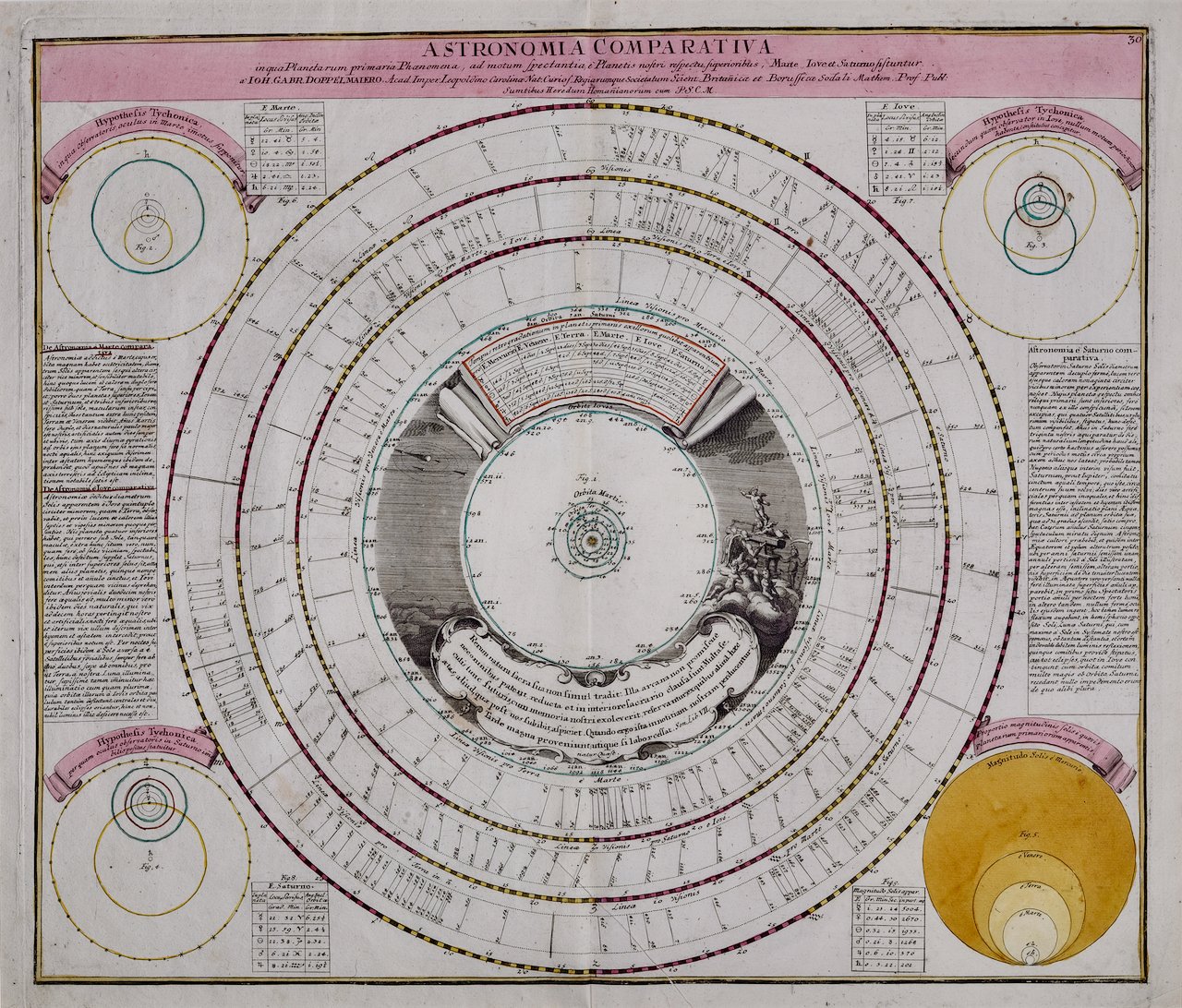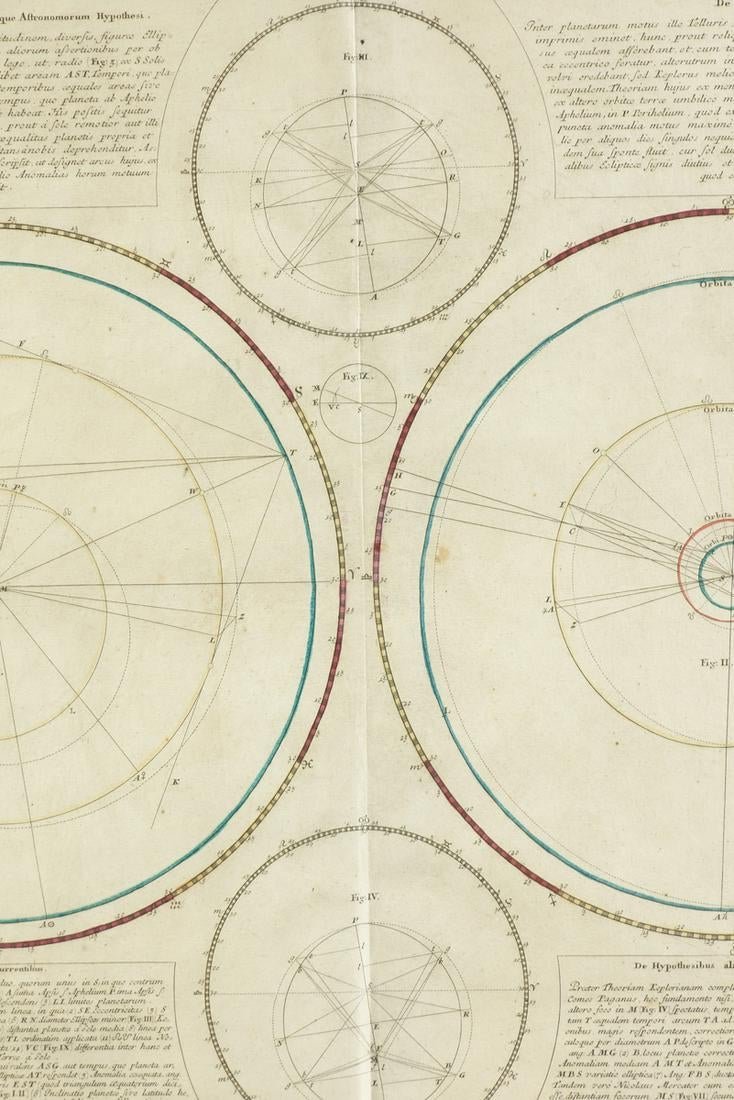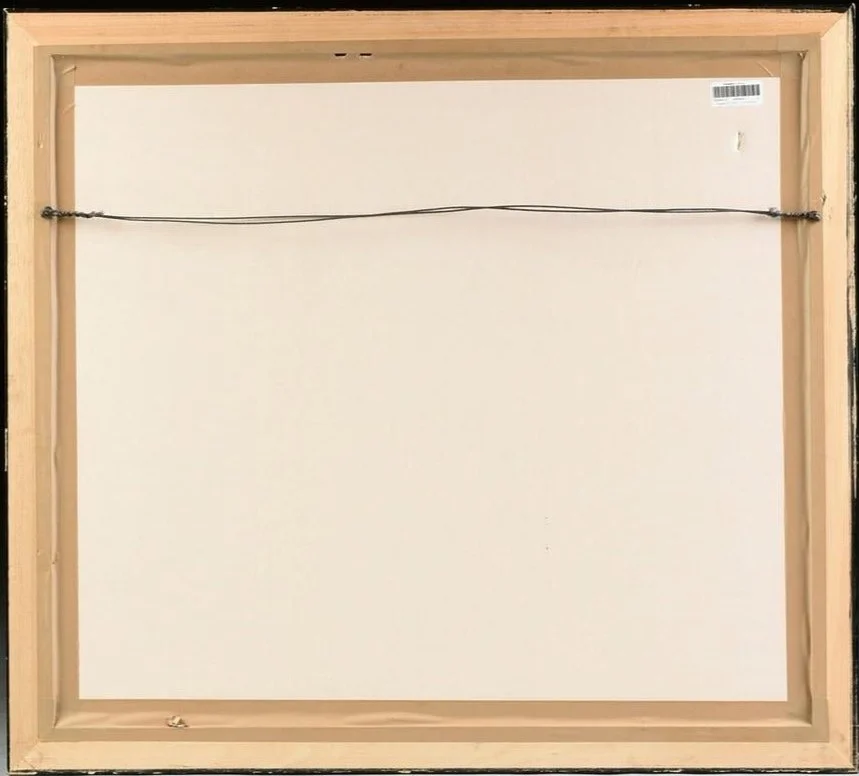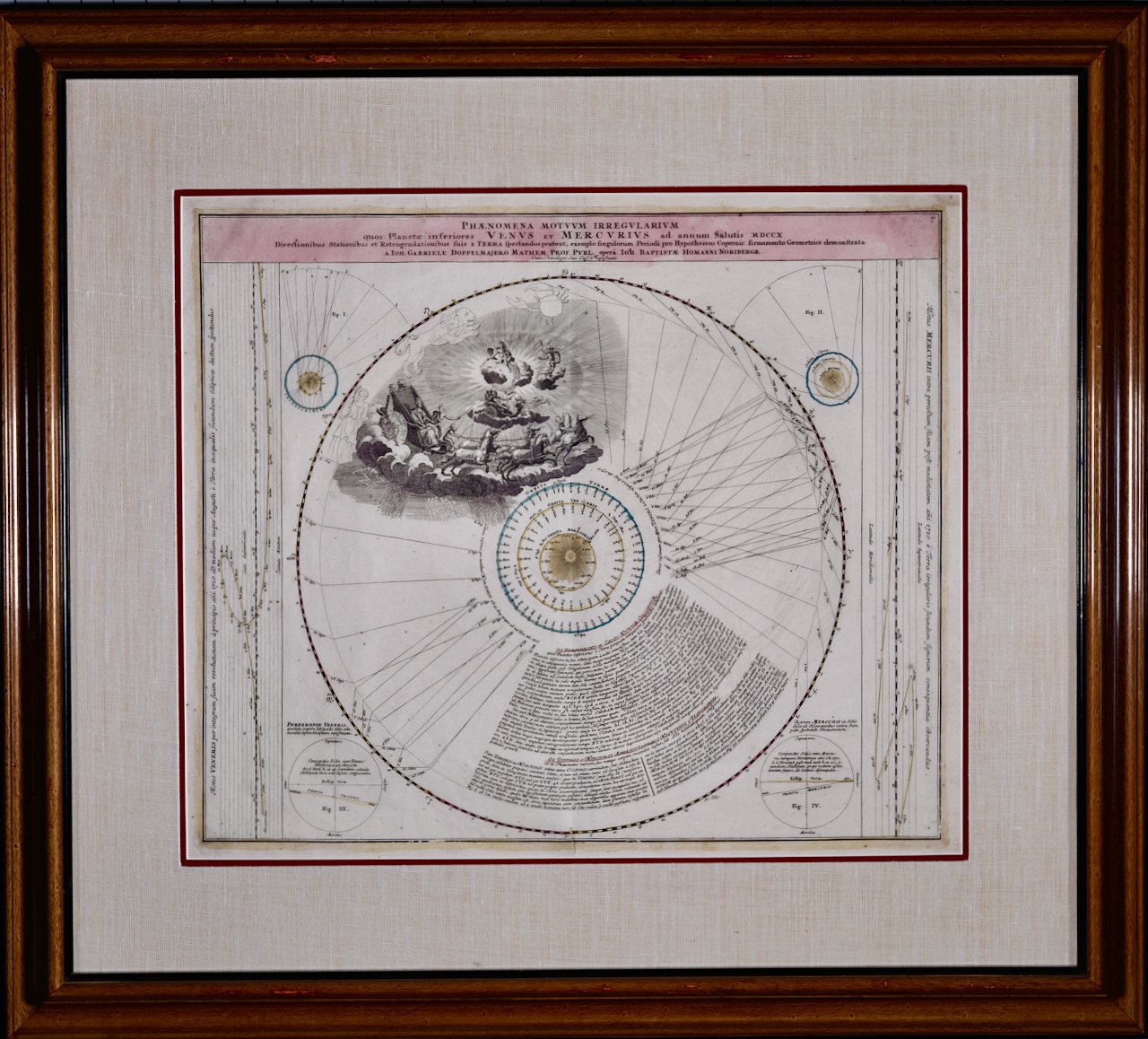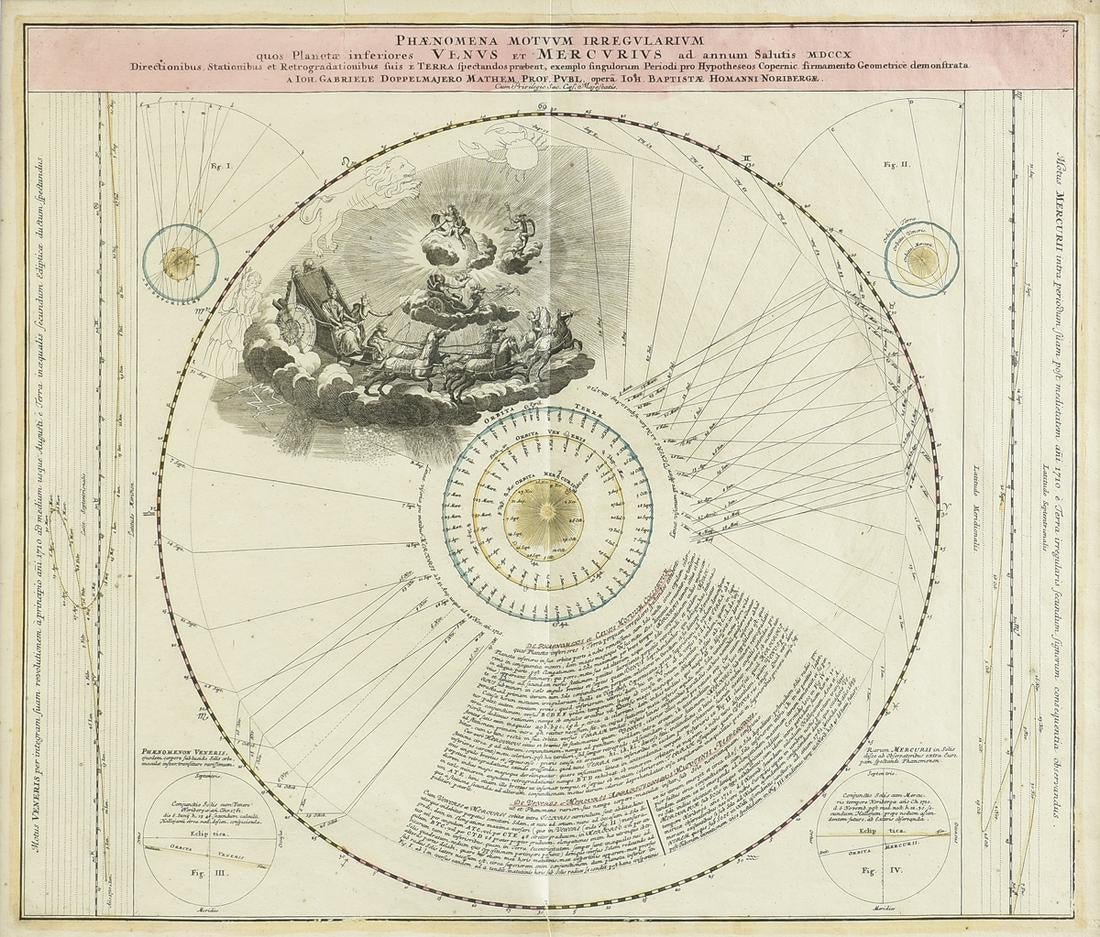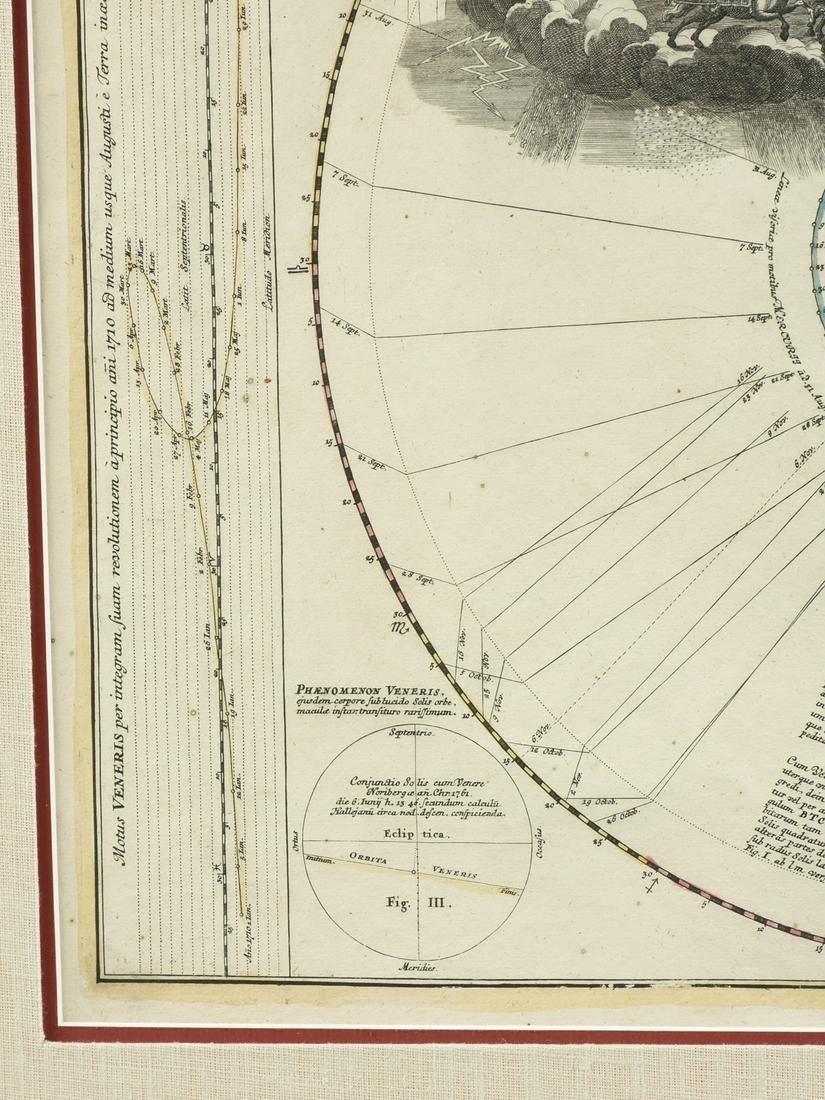The concentric circles appear to show the relative times when Saturn, Jupiter, and the zodiac can be observed. On the right within the concentric circles is a figural vignette of the God of the universe looking through a telescope while surrounded by winged personifications of stars and a standing figure of death with a sickle among the cloud filled heavens. The circles in three corners of the map are based on Tyche Brahe' concept of what an observer on Mars, Saturn, or Jupiter would see if they were stationary. The diagram in the lower right depicts the relative sizes of planets. Although fairly accurate, with the exception of Venus which appears larger than the earth (Terra).
This framed 18th century double page hand-colored engraved celestial map is printed on chain-linked laid paper. It is presented in an attractive polished medium brown-colored frame with contrasting black inner and outer trim. The frame measures 31.5" high by 34.94" wide by 1" in depth. There are small frame defects. The double mat consists of a beige fabric outer mat and a cranberry-colored inner mat. There is a central fold, as issued and an elongated crease that appears related to the paper's manufacture. There is one small spot in the upper right and two tiny spots in the upper right margin, but the visible portions of the print are otherwise in very good condition.
There are two other Doppelmayr/Homann celestial maps that are listed on our 1stdibs storefront that are presented in identical frames and maps. Two or three of these would make for an attractive and impressive display grouping. A discount will be extended for the purchase of multiple maps. Please reach out to us for more details about these striking and interesting celestial maps.
Johann Gabriel Doppelmayr (1677-1750) was a famous German geographer and astronomer, who was Professor of Mathematics at the Aegidien Gymnasium in Nuremberg, Germany. He wrote extensively on astronomy, geography, cartography, spherical trigonometry, sundials and mathematical and other scientific instruments and was involved in the production of terrestrial and celestial globes. He was a member of the Royal Society of London and the Berlin and St. Petersburg Academies of Sciences. In the early 1700s, Doppelmayr created astronomical and cosmological plates that were incorporated in atlases published by Johann Baptist Homann (1664-1724), and ones published after Homann's death by his heirs until 1848. Thirty of these plates were published in the Atlas Novus Coelestis in quo Mundus Spectabilis. Twenty of these plates focused on the cosmological systems of Copernicus and Tycho Brahe, as well as known details of the planets and other bodies in the solar system. The other ten plates focussed on constellations and the locations known stars and comets.
Johann Baptist Homann (1663-1724) was a mapmaker who founded a respected and prolific publishing company, which continued long after his death as Homann Heirs. Homann lived his entire life in Bavaria, particularly in Nuremberg. Initially, Johann trained to become a priest before converting to Protestantism and working as a notary. In 1702, Johann founded a publishing house that specialized in engravings. The firm flourished, becoming the leading map publisher in Germany and an important entity in the European map market. In 1715, Johann was named Imperial Geographer to the Holy Roman Empire by Charles VI and made a member of the Prussian Academy of Sciences. Most importantly for his business, his reputation and contacts gained him imperial printing privileges which protected his publications and recommended him to customers.


